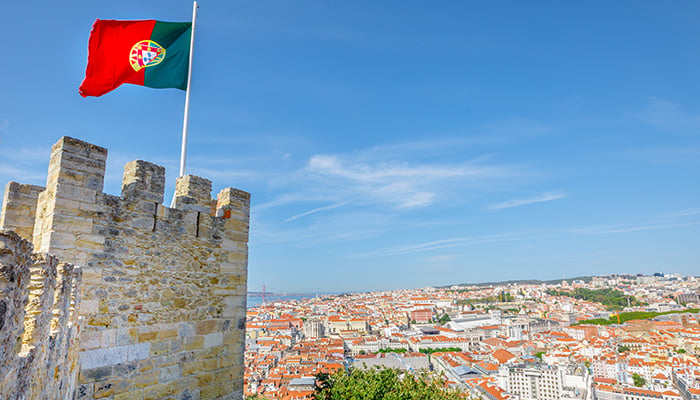#AsSeenInPrint: Towards Abstraction
| 12:55 (há 3 horas) |    | ||
| ||||
|\| ART BLOG HUMOR BLOG PHOTO BLOG CULTURE BLOG |:| FOR THE RENAISSANCE MAN & THE POLYMATH WOMAN |/|
| 12:55 (há 3 horas) |    | ||
| ||||
|
|
|

Portuguese companies continue to face a challenging property insurance market but private health insurance plans, which companies are increasingly providing for their employees, is the hardest market of all, brokers told Commercial Risk Europe.
Private health in Portugal has become increasingly important as the public health system has struggled to recover since the financial crisis of the early 2010s.
According to Portugal’s insurance supervisor, the latest data available shows that by the end of 2022, 3.7 million citizens were covered by private health insurance, which is equivalent to more than a third of the population. Most of the policies are bought by companies on behalf of their employees.
Demand for health insurance rose quickly after the Covid-19 pandemic, driving underwriters to adopt aggressive commercial strategies in order to increase their market shares, said Pedro Athouguia, general director of broker Melior Seguros.
But a mixture of high losses, the impact of inflation and a lack of competition has turned the market around, and rates went up by between 15% and 20% in the latest renewals, he said.
“The health insurance market has been very hard in recent years,” Athouguia said. “Supply has not evolved enough to generate competition with a higher number of players in the sector.”
He stressed that companies have not stopped buying the cover, which is already seen as a major perk by Portuguese workers, but a growing number have opted to purchase very basic policies, leaving employees the option of paying for extra protection.
The trend is unlikely to change because just a few insurers control most of the market. Athouguia believes it will be difficult for new players to enter because the healthcare services sector is also concentrated among a handful of providers that can drive a hard bargain with insurers.
“To enter the Portuguese market, companies either have to bring with them a healthcare services structure or make use of the existing providers, with whom incumbents already obtain competitive prices,” he said.
Health insurance premiums went up by 16.7% in 2023, reaching €1.34bn, according to ASF, the market supervisor. The segment now accounts for more than 20% of the non-life Portuguese market, compared to 17% in 2019.
Another challenging segment for Portuguese companies is property insurance. Larger buyers have to go to reinsurance markets abroad in order to find capacity for their catastrophic exposures, said Andreia Dias, head of corporate risks at broker MDS.
With global reinsurers still showing limited appetite for nat cat risks, Portuguese firms have been asked to retain higher and higher levels of risks and invest in risk management practices.
“It is not the case yet that Portuguese companies cannot place any of their property risks due to their catastrophic exposure,” Dias said. “But it has become more common that they have to self-insure a significant share of their property programmes.”
Portugal faces a wide range of natural catastrophic risks, including wildfires, droughts and windstorms. Lisbon was hit by a mini tornado in March, and the wildfire season is about to start in the country. In 2017, forest fires killed 117 people and caused €1.5bn in economic losses, according to a study by the European Commission.
“Finding capacity is more complicated in industries such as plastics, chemicals and food processing,” Dias said. “It has forced companies in those sectors to make more investments in risk management and prevention and to improve the quality of the risk.”
“Risk retention clauses did not use to be common, but now some have to retain up to €1m in fire risks,” she added.
Portugal’s biggest nat cat exposure is earthquake risk. In the 18th century, a huge quake caused widespread destruction in Lisbon and the south of the country. Athouguia noted that risk models estimate that a similar event could hit Portugal again soon.
“In the past year and a half, regulators are putting much attention on the possible creation of a catastrophic fund. But it is necessary to have some more political drive behind this idea,” he said.
The Portuguese liability market remains small. Athouguia said that Portugal’s slow-moving courts are a disincentive for litigation, and buyers do not see much reason to buy liability protection. But he recommends cover for those exposed to foreign markets.
There is a similar situation with cyber insurance. Portugal forbids the payment of ransoms including by insurers, and buyers are not convinced about purchasing the cyber cover at the moment, Dias said. However, risk awareness is improving, albeit slowly.
“Companies are beginning to show higher sensitivity to those risks, but we are still at the beginning of a long maturity process in Portugal,” she said.
Dias pointed out that non-life insurance premiums are growing faster than the economy in Portugal, posting a 10.4% increase last year, according to ASF. And underwriters based in other EU jurisdictions have an eye on the opportunities that can be found in the country. By the end of last year, non-Portuguese insurers had a 12.8% share of all non-life premiums.
“Insurance companies established in Spain are increasingly allocating capacity to Portugal. That is a good development because Portugal is going through a phase of market concentration,” she said. “There are not many generalist insurers with appetite for different kinds of risks.”